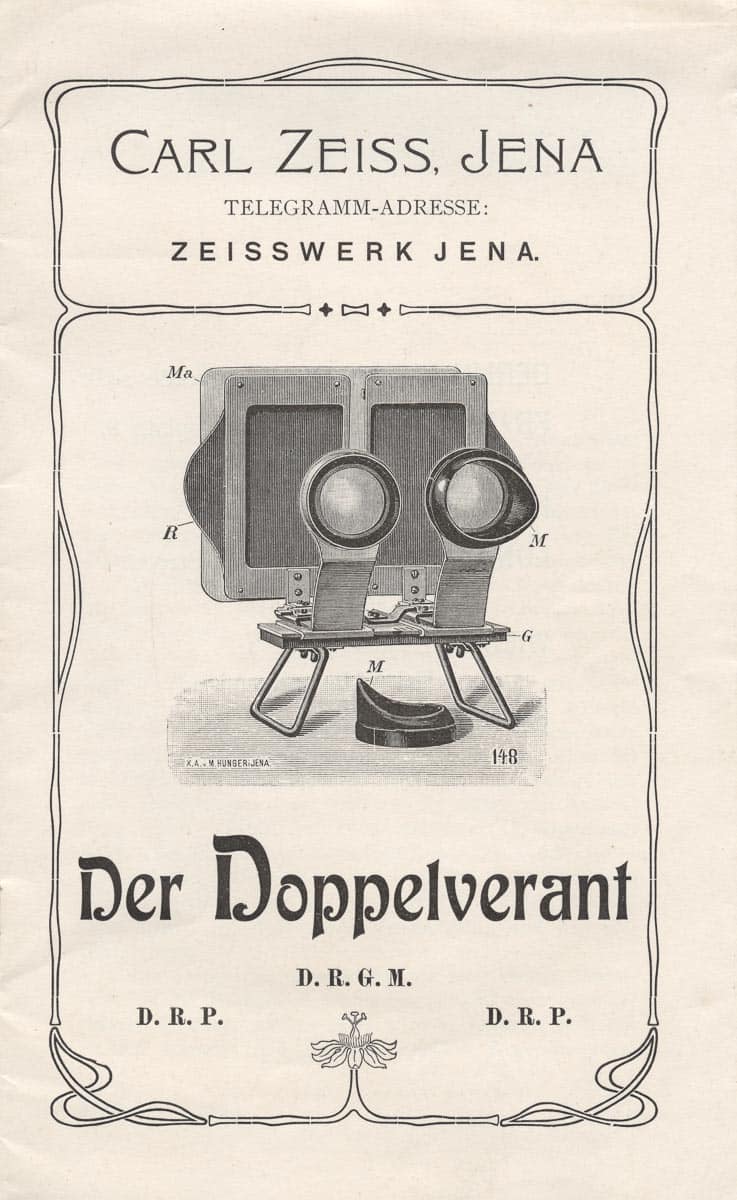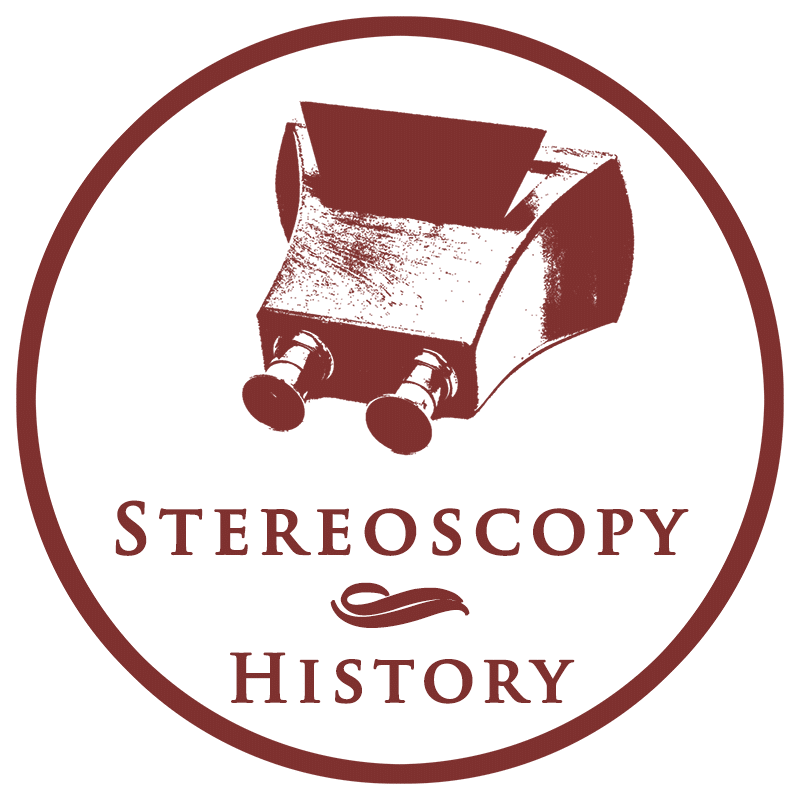
The Doppelverant is a stereoscope for viewing glass and paper card stereoviews. It can be used as tabletop or hand-held stereoscope. Folding the two legs together creates a handgrip1. The viewer was designed by Moritz von Rohr of Carl Zeiss Jena. There was also a model available for viewing “normal” images and this device was named Einzelverant.
The Doppelverant is equipped with two Verant Model B achromatic lenses. The viewer could be supplied with lenses with a focal length of 70 mm or 90 mm and slide holders were available for different stereo formats. This model has a holder for 6 x 13 cm glass stereoviews and includes a removable frosted glass to diffuse the light. It can be replaced by a black screen for viewing paper card stereoviews.
Specifications
| Manufacturer: | Carl Zeiss Jena |
| Year of introduction: | 19032 |
| Year of manufacture: | c. 1905 |
| Type: | Tabletop |
| Viewer: | Single-view |
| Serial number: | None |
| Stereoview support: | Glass stereoviews |
| Stereoview format: | 6 x 13 cm |
| Lens focussing: | By shifting the stereoview holder |
| Inter-ocular adjustment: | Yes |
| Eyepiece blinders: | Yes |
| Dimensions (L x W x H): | 17 x 13.5 x 15 cm |
| Construction: | Metal |
| Other features: | The name Carl Zeiss Jena is visible on the left lens holder and the right holder shows Doppel Verant in graceful italics. The base plate contains the abbreviation DRP (Deutsche Reich Patent). |

Glossary: inter-ocular adjustment / single-view / tabletop
Carl Zeiss Jena
Carl Zeiss Jena was founded in 1846 by Carl Zeiss in Jena, Germany. Initially focusing on the production of microscopes, Zeiss’s collaboration with physicist Ernst Abbe in 1866, and later with glass chemist Otto Schott, led to significant advances in optical theory and glass technology. This trio’s innovations revolutionised optical instrument quality and performance, including the development of the apochromatic lens.
The company expanded its product range to include photographic lenses, binoculars, and other optical instruments, becoming a global leader in the field. Throughout the 20th century, Carl Zeiss Jena faced various challenges, including the outcome of the Second World War, leading to the division of the company due to Germany’s partition. The East German part retained the name Carl Zeiss Jena, while the West German operations were re-established in Oberkochen under the name Carl Zeiss. Both companies were reunited after the reunification of Germany. Today, Carl Zeiss Jena is still influential in optics and precision engineering.
References
Further read
- Moritz von Rohr. Via: en.wikipedia.org
